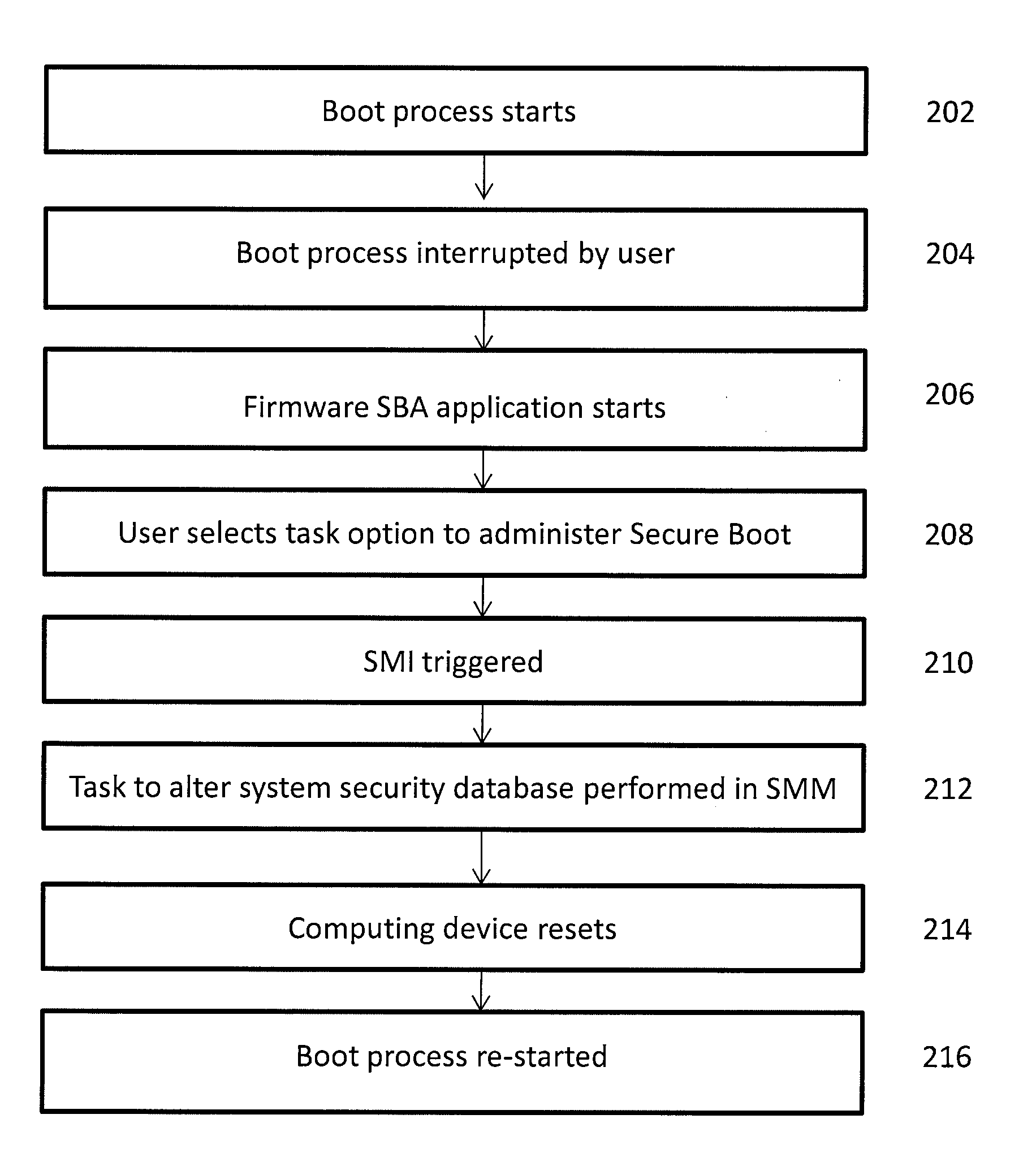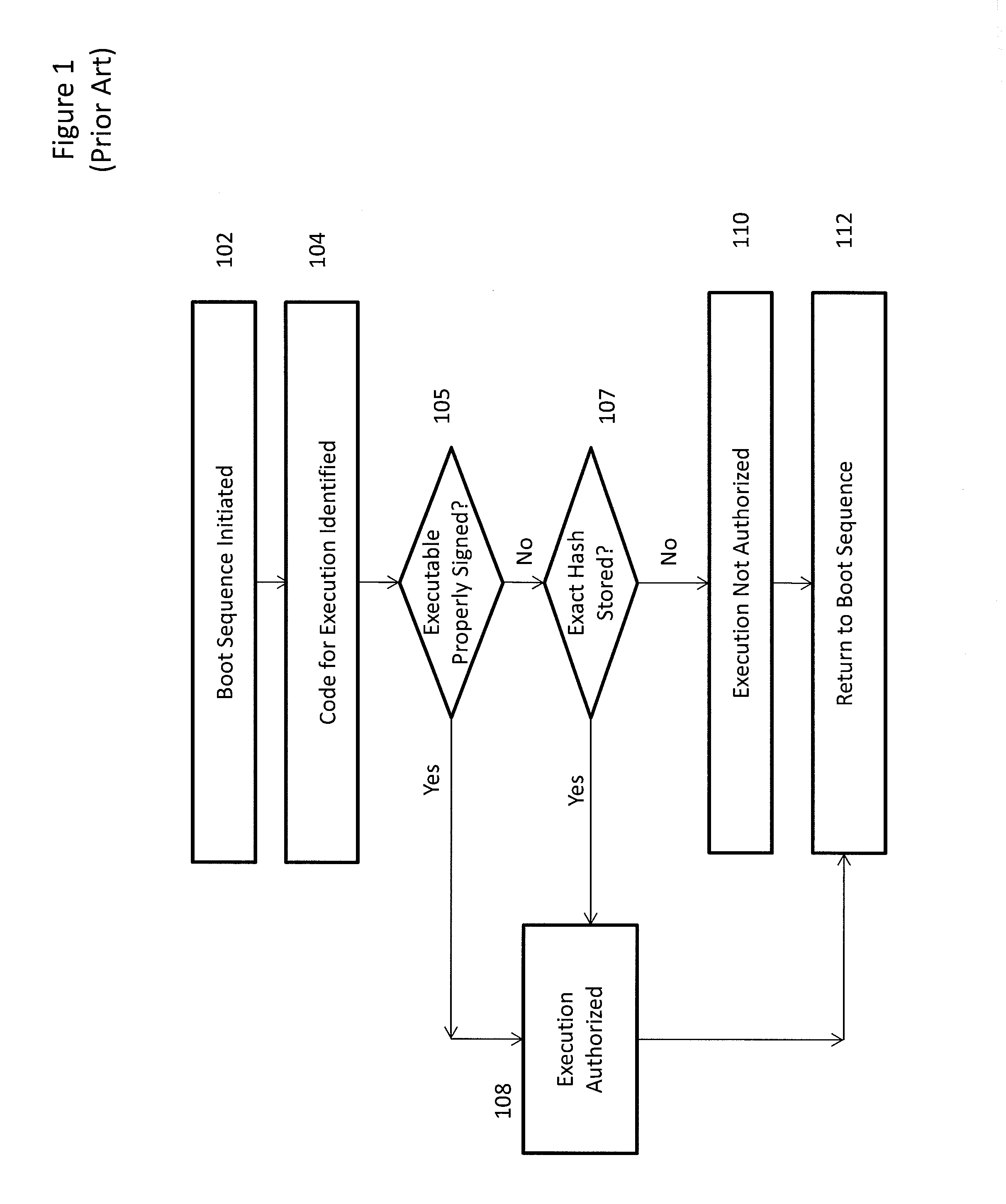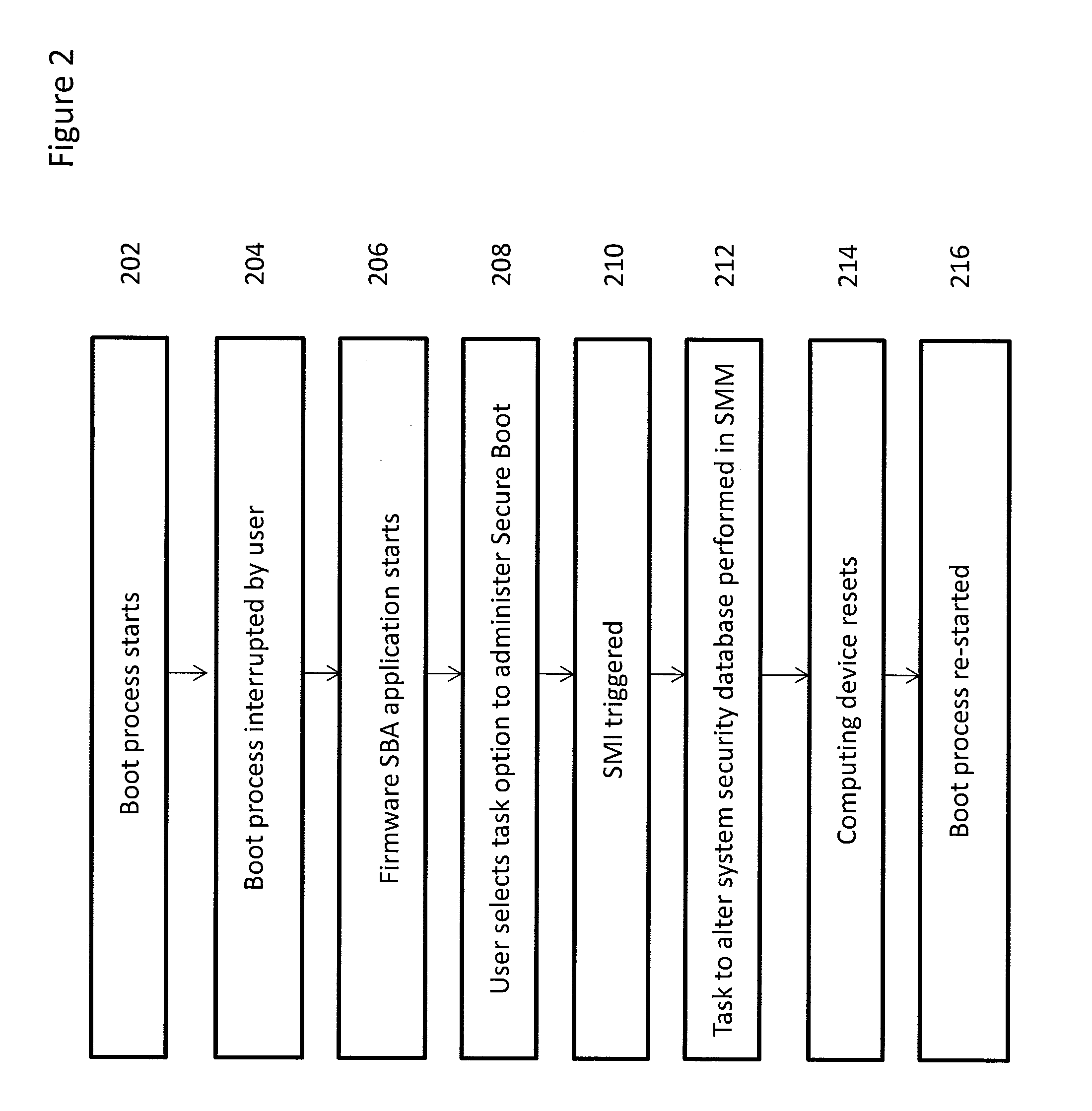Secure boot administration in a unified extensible firmware interface (UEFI)-compliant computing device
a technology of extensible firmware and computing device, applied in computing, digital computers, instruments, etc., can solve problems such as observation or modification
- Summary
- Abstract
- Description
- Claims
- Application Information
AI Technical Summary
Benefits of technology
Problems solved by technology
Method used
Image
Examples
Embodiment Construction
[0018]While ordinarily the conventional UEFI secure boot process described above provides a secure manner of validating executable code, in certain circumstances it can limit the amount of executable code available to the UEFI-compliant computing device. For example, the conventional UEFI Secure Boot process would prevent any unsigned application from being executed during the boot sequence due to the lack of a certificate used to sign the application or an exact hash of the application that is stored in the system security database. Since some applications are not signed prior to release or cannot be signed for legal and / or other reasons, or may be signed by an authority not included as a trusted signing entity when the system security database was originally installed during system manufacture, this conventional UEFI approach can limit the universe of available code for a computing device.
[0019]The embodiments of the present invention address these circumstances by enabling a devi...
PUM
 Login to View More
Login to View More Abstract
Description
Claims
Application Information
 Login to View More
Login to View More - R&D
- Intellectual Property
- Life Sciences
- Materials
- Tech Scout
- Unparalleled Data Quality
- Higher Quality Content
- 60% Fewer Hallucinations
Browse by: Latest US Patents, China's latest patents, Technical Efficacy Thesaurus, Application Domain, Technology Topic, Popular Technical Reports.
© 2025 PatSnap. All rights reserved.Legal|Privacy policy|Modern Slavery Act Transparency Statement|Sitemap|About US| Contact US: help@patsnap.com



